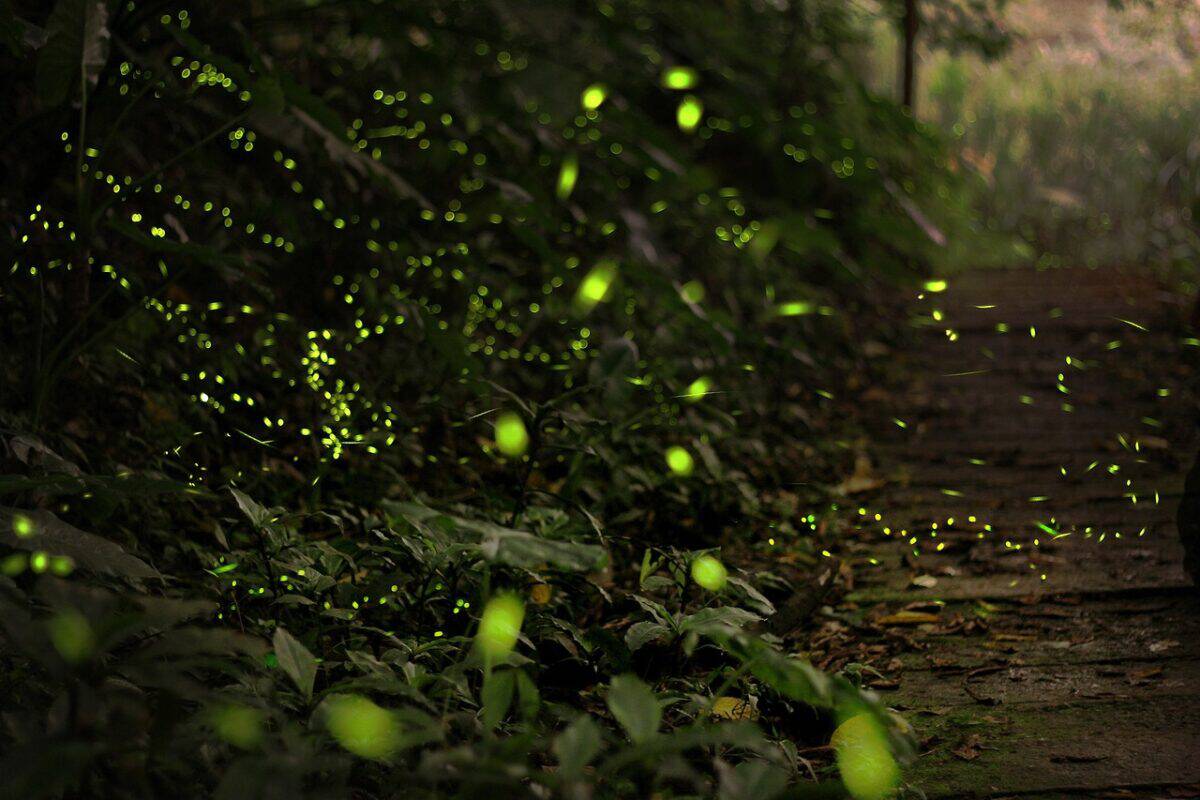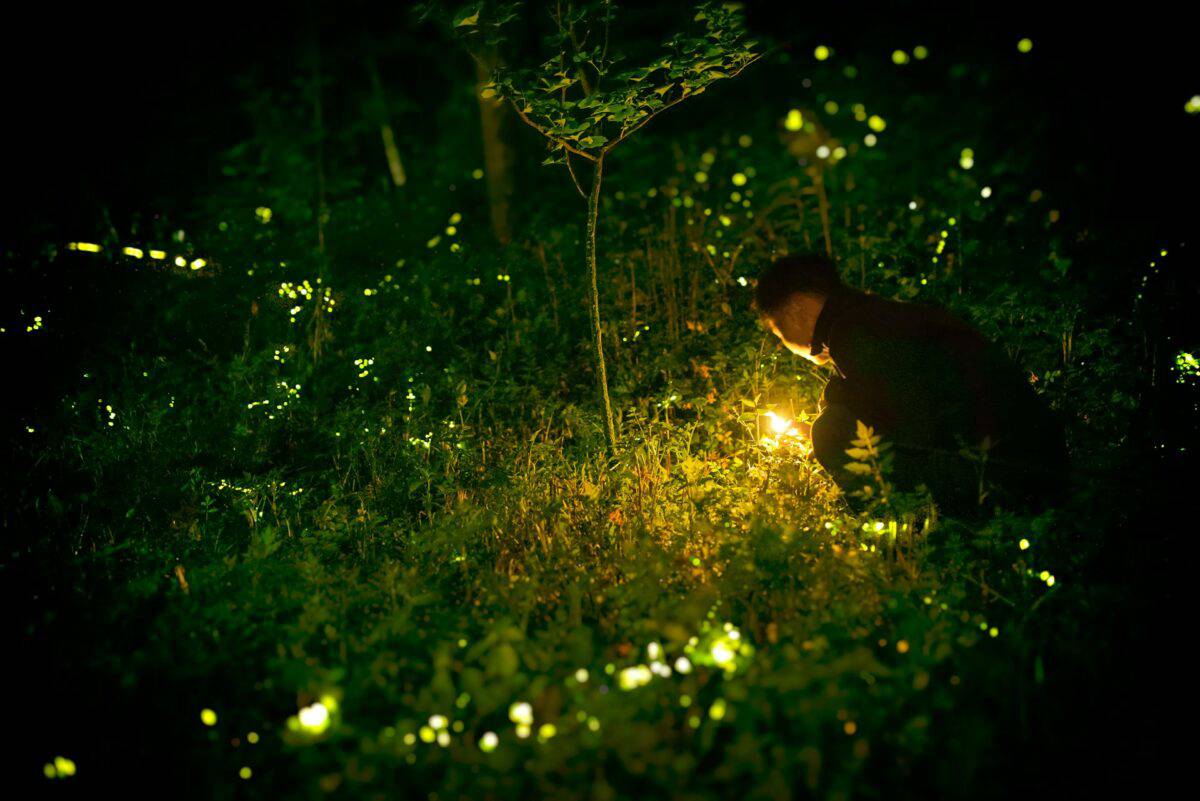In the misty valleys of the Appalachian Mountains, a magical phenomenon is making a comeback. Fireflies, those enchanting bioluminescent beetles that transform summer nights into starlit wonderlands, are returning to forests where they were once abundant but had mysteriously declined. This resurgence, particularly notable in certain Appalachian forest regions, represents not just a beautiful natural spectacle but also a significant environmental success story. Their return signals improvements in forest health, conservation efforts, and ecological awareness that offer valuable lessons for environmental restoration worldwide.
The Disappearing Light Show

For decades, scientists and local residents noticed a troubling trend across the Appalachian range: firefly populations were diminishing. These beloved insects, which have captivated humans for centuries with their synchronized light displays, seemed to be blinking out across many regions. Researchers documented declining numbers particularly in areas with increased human development, light pollution, and habitat disruption. By the early 2000s, some Appalachian communities that once hosted spectacular summer light shows reported seeing dramatically fewer fireflies or none at all. This decline was especially concerning because fireflies serve as indicator species—their presence or absence can reveal much about an ecosystem’s overall health.
Understanding the Appalachian Firefly Species

The Appalachian Mountains are home to several firefly species, each with unique flash patterns and ecological requirements. The most famous is perhaps Photinus carolinus, the synchronous firefly that creates spectacular coordinated light displays in places like Great Smoky Mountains National Park. Other notable species include the blue ghost firefly (Phausis reticulata), whose males emit a continuous blue-white glow as they hover near the forest floor, and various Photuris species known for their complex flash patterns. Each species occupies a specific ecological niche within the forest ecosystem, with preferences for particular moisture levels, vegetation types, and soil conditions. Understanding these requirements has been crucial to successful conservation and reintroduction efforts.
The Perfect Storm of Threats

The decline of fireflies across the Appalachian range was not attributable to a single cause but rather a convergence of multiple threats. Light pollution from expanding urban areas and rural development disrupted mating patterns, as artificial lights interfered with the insects’ bioluminescent communication. Habitat loss from logging, mining, and residential development eliminated crucial breeding grounds. Pesticide use in agriculture and residential landscaping killed both adult fireflies and their larvae. Climate change altered precipitation patterns and temperature cycles, affecting the delicate timing of firefly life cycles. Even well-intentioned forest management practices sometimes disrupted the leaf litter and soil conditions that firefly larvae need to develop. This complex web of threats required equally multifaceted solutions.
Conservation Initiatives That Made a Difference

The return of fireflies to certain Appalachian forests is largely attributable to concerted conservation efforts that began in the early 2000s. Organizations like the Appalachian Regional Reforestation Initiative partnered with state wildlife agencies, the U.S. Forest Service, and nonprofit conservation groups to implement targeted habitat restoration projects. These initiatives focused on recreating the specific forest conditions that fireflies need: proper moisture levels, abundant leaf litter, minimal light pollution, and appropriate forest understory plants. Local communities participated through citizen science projects to monitor firefly populations and create firefly-friendly practices in residential areas bordering forests. The Firefly Conservation Research collaborative, established in 2010, coordinated research and conservation efforts across the region, creating a network of protected firefly habitats throughout the Appalachian range.
The Role of Forest Management Practices

One of the most significant factors in the firefly recovery has been the evolution of forest management practices. Traditional forestry often prioritized timber production or fire suppression without considering the needs of insects like fireflies. Modern approaches now incorporate what scientists call “biodiversity-focused management,” which maintains the complex forest structures that fireflies require. This includes preserving dead wood habitats, maintaining moist forest floors with abundant leaf litter, and creating varied canopy structures that allow dappled light to reach the forest floor. In several test sites across the Appalachians, forest managers implemented rotational selective cutting rather than clear-cutting, maintained buffer zones around streams and seeps, and allowed natural forest succession processes to create diverse age structures. These forest patches became the initial “reservoirs” where firefly populations began to rebound.
The Dark Sky Movement’s Impact

Perhaps surprisingly, one of the most effective interventions for firefly recovery came not from direct habitat management but from addressing light pollution. The Dark Sky Movement gained traction in Appalachian communities beginning around 2008, with towns like Spruce Pine, North Carolina, and Monterey, Virginia, implementing outdoor lighting ordinances that required shielded fixtures, warmer color temperatures, and reduced nighttime illumination. These measures not only preserved the visibility of the night sky but also created “dark corridors” where fireflies could mate without interference from artificial light. Research conducted at Western Carolina University demonstrated that firefly mating success increased by up to 70% in areas where light pollution had been reduced, even when other habitat factors remained constant. This relatively simple and cost-effective intervention proved crucial for firefly recovery in residential areas adjacent to forests.
Climate Adaptation and Microclimate Management

As climate change alters temperature and precipitation patterns across the Appalachians, conservation efforts have increasingly focused on creating and preserving microclimate refugia—small areas with stable conditions that can shelter sensitive species like fireflies. Forest managers have identified north-facing slopes, stream corridors, and areas with dense canopy as natural climate refuges and prioritized these areas for protection. Some projects have even implemented small-scale interventions like creating shallow depressions that collect moisture or strategically placing woody debris to create humid microhabitats. A 2018 study by the Appalachian Landscape Conservation Cooperative found that firefly populations in these managed microclimate refugia remained stable even during drought years, while populations in unmanaged areas fluctuated dramatically with weather conditions. This approach represents a promising strategy for helping fireflies and other climate-sensitive species adapt to changing conditions.
The Synchronous Firefly Success Story

The recovery of synchronous fireflies (Photinus carolinus) represents one of the most visible success stories in Appalachian firefly conservation. These insects, famous for their ability to synchronize their flashing patterns across large groups, create one of North America’s most spectacular natural light shows. While they were once common across many parts of the Appalachian range, by the early 2000s, large displays were documented in only a few locations, most famously in Great Smoky Mountains National Park. Through targeted habitat protection, visitor management, and light pollution controls, synchronous firefly populations have now been documented in at least 12 new locations across the Appalachian range since 2015. In Pennsylvania’s Allegheny National Forest, a population discovered in 2012 has grown from an estimated few hundred individuals to tens of thousands by 2022, creating displays that now draw carefully managed ecotourism. These success stories demonstrate that with proper protection, even highly specialized firefly species can recover.
Economic Benefits of Firefly Conservation

The return of fireflies to Appalachian forests has generated surprising economic benefits for local communities. Firefly tourism has emerged as a significant economic driver in rural areas, with events like the Firefly Festival in the Smokies drawing thousands of visitors annually. A 2021 economic impact study estimated that firefly-related tourism generates over $4.5 million annually for communities surrounding Great Smoky Mountains National Park alone. Beyond direct tourism revenue, the presence of healthy firefly populations has enhanced property values in certain communities and created marketing opportunities for “firefly-friendly” businesses and products. Perhaps most significantly, the firefly recovery demonstrates the economic value of intact, functioning ecosystems—what economists call “natural capital.” Communities have increasingly recognized that preserving forest conditions that support fireflies also provides valuable ecosystem services like clean water, flood control, and carbon sequestration.
The Role of Citizen Science

The firefly recovery in Appalachian forests has been significantly bolstered by citizen science initiatives that engage local communities in monitoring and conservation. Programs like Firefly Watch, established by the Museum of Science in Boston, and regional efforts like the Appalachian Firefly Project have trained thousands of volunteers to observe and record firefly activity across the region. These citizen scientists collect valuable data about species distribution, abundance, and timing that would be impossible for professional researchers to gather alone. Beyond data collection, these programs build community investment in firefly conservation. Participating landowners often adopt firefly-friendly practices on their own properties, creating a network of suitable habitats that connect larger protected areas. The Firefly Brigade, a volunteer organization formed in western North Carolina in 2014, has even developed a certification program for “Firefly Friendly Communities” that has been adopted by over 30 municipalities across the Appalachian region.
Challenges That Remain

Despite encouraging successes, firefly recovery in the Appalachian forests faces ongoing challenges. Development pressure continues to threaten forest habitats, particularly in rapidly growing areas like western North Carolina and eastern Tennessee. Climate change poses long-term threats, with models predicting that suitable habitat for some firefly species may shift northward or to higher elevations over the coming decades. Invasive species like the emerald ash borer and hemlock woolly adelgid are altering forest composition across the region, with uncertain implications for firefly habitat. Light pollution continues to expand with development, requiring ongoing advocacy for dark sky protections. Perhaps most concerning is the fragmentation of firefly populations—while certain protected areas have seen dramatic recoveries, these populations remain isolated from each other, limiting genetic exchange and resilience. Conservation biologists are now focusing on creating corridors between these population centers to ensure long-term viability across the broader landscape.
Lessons for Global Conservation

The recovery of fireflies in Appalachian forests offers valuable lessons for conservation efforts worldwide. First, it demonstrates the power of targeted, science-based interventions—understanding the specific needs of a species and addressing those needs directly. Second, it highlights the importance of addressing multiple threats simultaneously; success came not just from habitat protection but also from reducing light pollution, changing forest management practices, and engaging communities. Third, it shows that even species that have declined significantly can recover relatively quickly when conditions improve—firefly populations in some restored areas rebounded within just 3-5 years. Finally, the Appalachian firefly story illustrates how charismatic, culturally significant species can serve as conservation ambassadors, generating public support and resources that benefit entire ecosystems. These lessons are being applied to firefly conservation efforts in other regions and to conservation projects focused on other declining insect species.
A Glimmering Future

The return of fireflies to Appalachian forests represents one of the most hopeful environmental success stories of recent years. Through coordinated conservation efforts, scientific research, community engagement, and policy changes, these beloved insects are once again illuminating summer nights across the region. Their recovery demonstrates that thoughtful, science-based interventions can reverse biodiversity declines and restore ecological functions even in ecosystems with complex histories of human use. As firefly populations continue to expand and strengthen, they offer both an enchanting natural spectacle and a powerful reminder of nature’s resilience when given the opportunity to recover. The work continues, but the trajectory is clear—the lights of the Appalachian forests are coming back on, one blink at a time, illuminating a path toward more biodiverse and functioning ecosystems throughout the region.
- This Ant Can Explode to Defend Its Nest - August 18, 2025
- The Most Intelligent Marine Creatures You Didn’t Know About - August 18, 2025
- Bald Eagles Were Almost Gone From Alaska, But Now They’re Thriving Again - August 18, 2025

